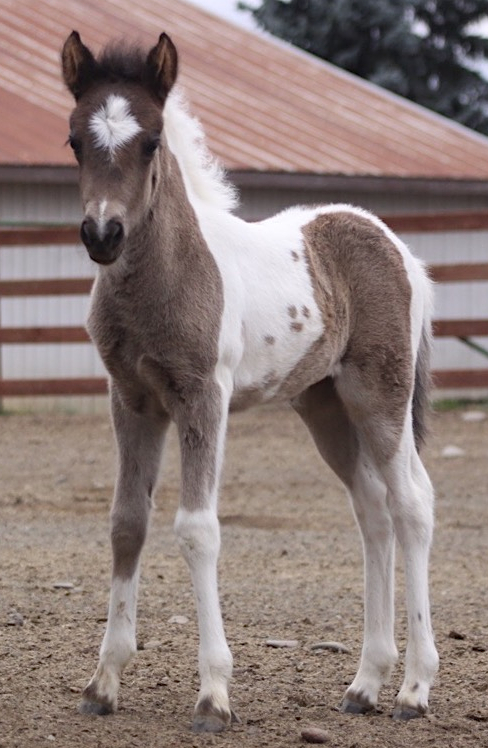Quick Summary

Click here for Price and Turnaround Time
Phenotype: Tobiano is a white spotting pattern characterized by patches of white that typically cross the topline somewhere between the ears and tail. These white ares are generally regular and distinct vertical patterns. Usually, unless there are other white patterning genes involved, the head is colored.
Mode of Inheritance: Autosomal dominant
Alleles: N = Normal or non-tobiano, TO = Tobiano
Breeds appropriate for testing: Many breeds
Explanation of Results:
- Horses with N/N do not have the tobiano pattern and cannot transmit this tobiano variant to their offspring.
- Horses with N/TO genotype will have the tobiano pattern and may transmit this tobiano variant to 50% of their offspring. Matings with N/N genotype will result in a 50% chance of producing a tobiano foal.
- Horses with TO/TO genotype will have the tobiano pattern and will transmit this tobiano variant to all of their offspring. Matings with any genotype are predicted to produce tobiano foals.
White Pattern Panel 1
$65 per animal
White Pattern Panel 2
$85 per animal
Full Color/Pattern Panel
$155 per animal
Shetland Pony Coat Color Panel
$100 per animal
Sample Collection
Horse DNA tests are carried out using cells from the roots of a hair sample (roughly 20-40 hairs).
1. Grab about 10 hairs at the base.
2. Wrap the hairs around your finger and give it a quick pull.
3. Check the ends to make sure the pulled hairs have roots.
4. Repeat the process until you have collected about 20-40 hairs with intact roots.
5. You can choose different places on the mane or tail. NOTE: For foals, we recommend pulling all hairs from the tail only.
6. Tape the hairs to the submission form and fold the form along the dotted line to protect the sample. Do not use ziploc bags as they can cause condensation that allows mold to grow on the hair.
7. Place the folded form containing the sample in a paper envelope and mail it to the laboratory.
The tobiano white spotting pattern is a trait controlled by a dominant allele. The pattern, like all white spotting patterns in the horse, can range in the amount of white but is generally characterized by white patches crossing the topline somewhere between the ears and tail. The skin underlying the white spots is pink and under the pigmented areas it is black. The eyes are usually brown, but one or both may be blue or partially blue. The head is typically dark, with white markings like those of a solid-colored horse, unless other white spotting genes are contributing. Usually, all four legs are white below the hocks and knees. The tail can be two colors—a characteristic seldom seen in horses that are not tobiano.
The tobiano gene has two alternative states (alleles). The dominant allele, TO, produces the tobiano pattern and the recessive allele, called "N" by VGL but "to" by others, is non-tobiano. A horse that is homozygous for tobiano, symbolized as (TO/TO), will always produce offspring that are tobiano regardless of the mate. For breeders interested in producing tobiano foals, a horse that is homozygous for tobiano is desirable in a breeding program.
Unlike other white spotting patterns caused by specific changes in DNA sequence of the genes, tobiano is associated with a large chromosome inversion that likely affects the function of the pigmentation gene KIT. The inversion associated with the tobiano pattern was identified by researchers at the University of Kentucky.
Testing for tobiano can assist in mate selection for this pattern.
